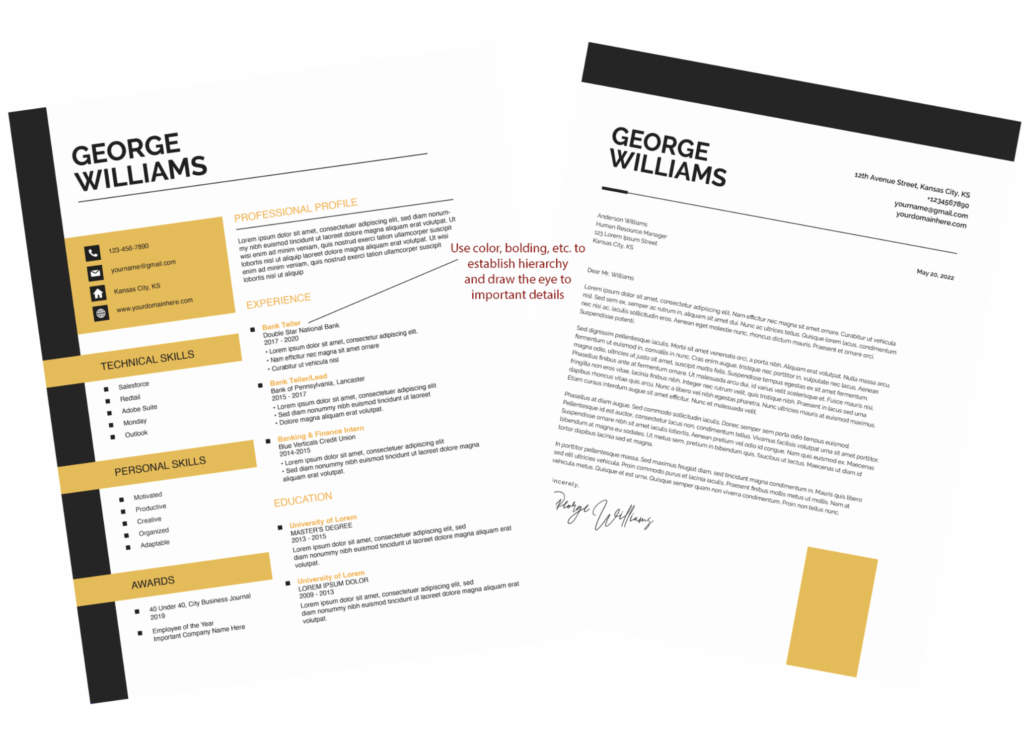Mind the Gap
We’ve said it before here in “Resu-yay,” but it’s been a while since then and we’ve all experienced some pretty weird years in between. So, let’s update and discuss some thoughts on employment gaps and how to make yourself shine when the first interaction with a company isn’t YOU at all, but rather your resume.
Our thoughts from Resu-yay haven’t really changed. You should use bullets rather than paragraphs, ensure you have a professional email address, check for grammar and/or spelling errors, don’t include pictures, cut out fluff or excess information and be wary of leaving unexplained gaps – even if that requires a cover letter. However, we’d be lying if we said we hadn’t seen more gaps in employment of late. So, let’s discuss how you might not only explain those gaps, but also focus on your relevant experience and knowledge.
1. Don’t Try to Bury the Gap in a Funky Layout
One idea that might occur to you is utilizing a different type of resume template/formatting. A lot of template resumes and examples you see go in reverse chronological order with most recent experience front and center. While this isn’t a “rule,” it is a safe suggestion. Reverse chronological is the easiest for hiring managers to run through and, being the most common outline, is appreciated for its familiarity. This might seem daunting if your most recent experience was interrupted by COVID or other factors. Don’t lose hope. Whether your last position was a part-time gig to survive COVID-19, you were let go or took off at the beginning of the pandemic and chose to take the time to stay home with kids or loved ones with vulnerable health or your gap just happened to coincide with recent events, we’re seeing more of it. It won’t be a surprise and it doesn’t have to count against you – it’s OK.
What we’re here to do is get you back on track and to showcase your relevant skills in a way that doesn’t bury the details and makes sense for you, the position, and the hiring manager. Stick with reverse chronological, please, but consider emphasizing applicable experience by utilizing color, bullets, or bold title texts.
Here’s an example of someone using color, bullets, and fonts to highlight relevant experience:

2. Consider a Cover Letter Outlining Your Relevant Skills and Acknowledging the Gap in Employment
Be professionally candid regarding your gap in employment. One of the benefits of everyone going through the last few years is that everyone went through it. While not everyone’s experience was the same, we all pretty much know someone who had a similar experience and can relate to it on some level. Empathy goes a long way here. If you had a great job you loved prior to the Pandemic and it just didn’t work with your kids being out of school for a year – say so! That’s a total bummer but we’re thrilled that you’re finally able to get back into a career you love – and even more so that we might be able to help you get there. Don’t be ashamed, be realistic about your gap.
This is also a fantastic opportunity to hit on some of those key skills you think would make you our ideal candidate. “I haven’t been able to do this for two years due to being home with my kids, but I could knock your socks off with my level of customer service and phenomenal follow-through.” Ok, don’t say that exactly, but you get the idea! Be sure to have a friend or family member with attention to detail proof your cover letter – in addition to your resume. This is an opportunity to shine, but typos and grammatical errors could take your level 10 resume down to a two.
3. Do a Good Job of Emphasizing Applicable Skillsets and Experience in Other Sections
Here, consider the position for which you’re applying against those positions you’ve held in the past. The most key achievement in your old position may not be the achievement to focus on here. Instead, think of skills that you’ve developed that might also be useful in the new position. Do research on the position, the industry, and the office to which you’re applying and try to focus on the skills that would be beneficial to them. Be honest – don’t just produce what you think they want to hear – but don’t be afraid to brag on yourself a bit. Take special note of soft skills that you possess – we aren’t only looking for technical skills, but an overall fit for the office and their needs.
Again, put those strengths in bullets vs paragraphs so that they’re featured appropriately and can be easily spotted. These skills are so much more important than a gap and will set you apart from other individuals applying for this position.
Most important, though? Be confident — and good luck — we’re rooting for you!